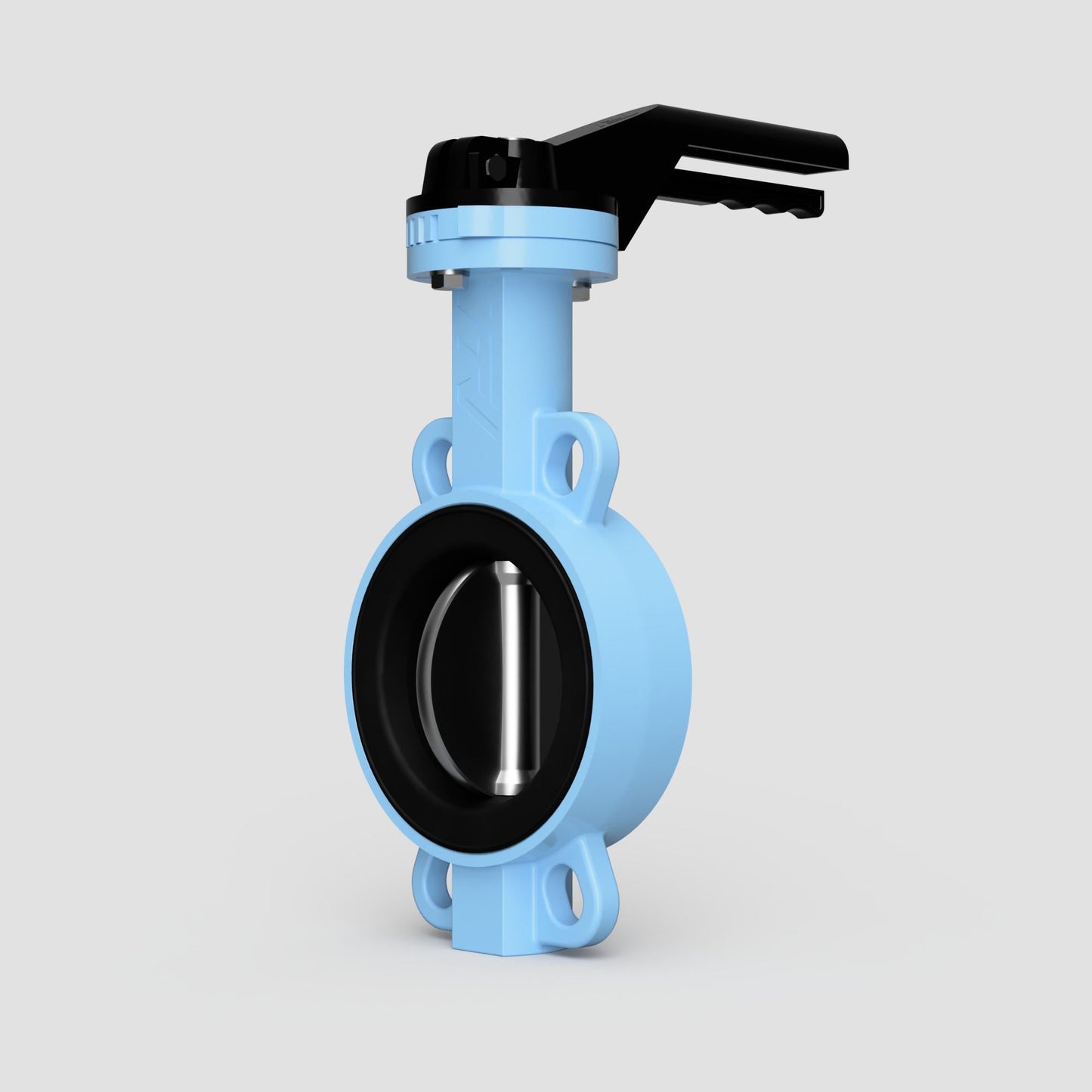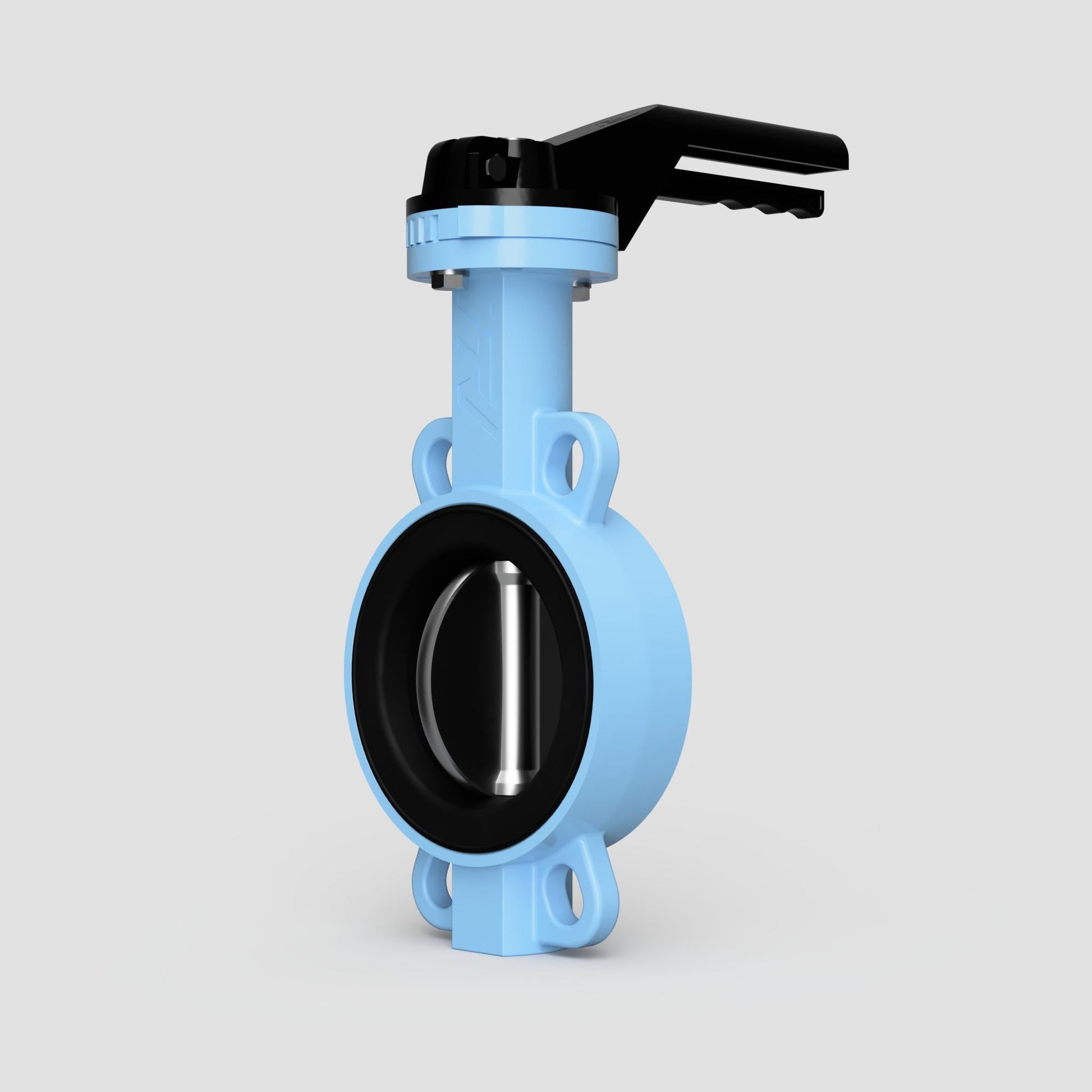Steam Valves
TTV Wafer Butterfly Valve - High Temperature EPDM Seat
TTV Wafer Butterfly Valve - High Temperature EPDM Seat
Couldn't load pickup availability
The Wafer Pattern TTV Butterfly Valve is built for tough, high-temperature applications. With a PN16 pressure rating and a body made from Ductile Iron GJS500-7, this valve is both strong and resistant to wear, making it perfect for demanding industrial environments.
What sets this valve apart is its high-temperature seat, designed to maintain a tight seal even when the heat is on. This makes it a reliable choice for systems where standard materials might not hold up, such as steam lines or high-temperature fluid systems.
The valve is easy to operate with its lockable lever, allowing you to control flow with precision. The lockable feature adds an extra layer of security, ensuring the valve isn’t accidentally adjusted, which is particularly important in safety-sensitive situations.
Thanks to its wafer-style design, this butterfly valve is compact and straightforward to install between flanges, saving you both space and hassle during installation. Its design also ensures minimal pressure drop, so you get efficient flow control without sacrificing performance.
If you’re working with high-temperature systems and need a valve that can handle the heat while delivering consistent performance, the Wafer Pattern TTV Butterfly Valve with a high-temperature seat is a smart and reliable choice.
Share

FAQ's
What is the difference between a valve and an actuator?
What types of actuators are available?
The main types of actuators are:
Pneumatic actuators – use compressed air for fast, reliable operation.
Electric actuators – use electrical power for precise control.
Hydraulic actuators – use fluid pressure for high-torque applications.
Each type offers unique advantages depending on the environment, media, and system control needs.
How do I choose the right actuator for my valve?
To select the correct actuator, consider:
Valve type and torque requirement
Power source available (air, electric, or hydraulic)
Operating environment (temperature, humidity, hazardous area)
Control signal type (on/off or modulating)
Matching actuator torque and compatibility with the valve’s ISO mounting ensures reliable performance.
What are the main types of valves used in automation?
The most common valves in automated systems include:
Ball valves – for tight shutoff and quick operation.
Butterfly valves – for larger flow control with compact design.
Globe valves – for precise throttling and flow regulation.
Check valves – to prevent backflow.
Gate valves – for full bore flow isolation.
What’s the difference between a double-acting and spring-return actuator?
Double-acting actuators use air (or power) to both open and close the valve.
Spring-return actuators use air to open (or close) the valve, and a built-in spring to automatically return it to a safe position when power or air is lost — ideal for fail-safe operation.
How often should valves and actuators be serviced?
Regular maintenance intervals depend on operating conditions, but a good rule of thumb is to inspect every 6–12 months.
This includes checking for leaks, lubrication, seal wear, and actuator responsiveness to prevent unexpected downtime.

